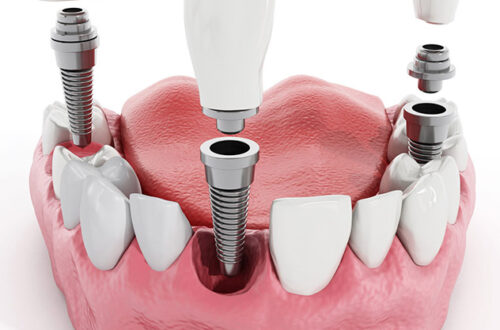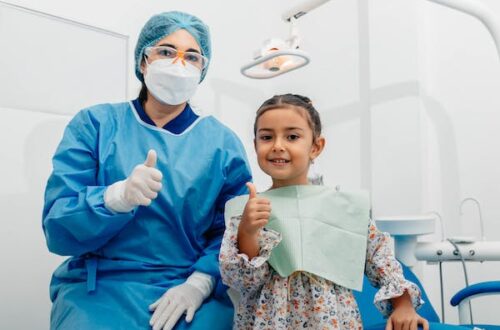Unraveling the Mystery: Understanding the Causes, Symptoms, and Treatment of Scoliosis
Are you curious about the intricate workings of the human body? Have you ever wondered what causes scoliosis, a condition characterized by an abnormal curvature of the spine? Look no further, as we embark on a journey to unravel the mysteries of scoliosis. In this comprehensive guide, we will delve deep into the causes, symptoms, and treatment options available for this condition. From exploring the genetic and environmental factors that contribute to scoliosis, to understanding the telltale signs and symptoms that may indicate its presence, we will leave no stone unturned. And fear not, as we navigate the vast landscape of treatment options, we will shed light on both traditional and innovative approaches that can help alleviate the discomfort and improve the quality of life for those affected by scoliosis. So, join us as we demystify the enigma of scoliosis and empower ourselves with knowledge to better understand and manage this condition.
What is scoliosis?
Scoliosis is a medical condition that affects the curvature of the spine, causing it to bend sideways. Instead of a straight line, the spine takes on a C or S-shaped curve. This abnormal curvature can occur at any age, but it is most commonly diagnosed during adolescence when rapid growth is experienced. The severity of scoliosis can vary widely, with some cases being mild and others requiring more aggressive treatment. While scoliosis can be alarming, it is important to note that most cases are not life-threatening and can be managed with appropriate care.
The exact cause of scoliosis is still not fully understood, but there are several factors that are believed to contribute to its development. Genetic predisposition is thought to play a role, as scoliosis tends to run in families. However, it is important to note that not all individuals with a family history of scoliosis will develop the condition. Other potential causes include neuromuscular conditions, such as cerebral palsy or muscular dystrophy, that affect the muscles and nerves responsible for maintaining proper spinal alignment. In some cases, scoliosis may also be the result of a congenital abnormality present at birth.
Types of scoliosis
Scoliosis can be classified into different types based on its cause and when it develops. The most common types include idiopathic scoliosis, which has no known cause, and congenital scoliosis, which is present at birth. Idiopathic scoliosis is further divided into three subcategories: infantile, juvenile, and adolescent scoliosis. Infantile scoliosis occurs in children under the age of three, juvenile scoliosis develops between the ages of three and nine, and adolescent scoliosis is diagnosed in individuals between the ages of ten and eighteen. Other types of scoliosis include neuromuscular scoliosis, which is associated with conditions such as cerebral palsy or muscular dystrophy, and degenerative scoliosis, which occurs as a result of age-related changes in the spine.
Causes of scoliosis
While the exact cause of most cases of scoliosis is unknown, there are several factors that are believed to contribute to its development. As mentioned earlier, genetic predisposition plays a role in the development of scoliosis. If a close family member, such as a parent or sibling, has scoliosis, the risk of developing the condition increases. However, it is important to note that not all individuals with a family history of scoliosis will develop the condition. Other potential causes of scoliosis include neuromuscular conditions, such as cerebral palsy or muscular dystrophy, that affect the muscles and nerves responsible for maintaining proper spinal alignment. In some cases, scoliosis may also be the result of a congenital abnormality present at birth.
Symptoms of scoliosis
Scoliosis can cause a variety of symptoms, although some individuals may not experience any symptoms at all. The most common symptom of scoliosis is a visible curvature of the spine. This can be seen when a person is standing or bending forward, as the spine may appear to be curved to one side. Other symptoms may include uneven shoulder or hip height, an asymmetrical waistline, or a prominent shoulder blade. In some cases, scoliosis may cause pain or discomfort, particularly in the back or neck. It is important to note that the severity of symptoms can vary widely depending on the degree of curvature and the individual’s age.
Diagnosing scoliosis
If scoliosis is suspected, a medical professional will typically perform a thorough physical examination to assess the curvature of the spine. This may involve observing the individual’s posture, examining their back and shoulders, and measuring the angles of the spine using special tools, such as a scoliometer or an X-ray. The medical professional may also ask about any symptoms the individual may be experiencing and inquire about their medical history. If scoliosis is confirmed, further tests may be conducted to determine the cause and severity of the condition. These may include additional imaging tests, such as an MRI or a CT scan, or genetic testing in cases where a genetic cause is suspected.
Treatment options for scoliosis
The treatment options for scoliosis can vary depending on the severity of the condition and the age of the individual. In mild cases, where the curvature is minimal and not progressing, regular monitoring may be sufficient. This may involve periodic check-ups with a medical professional to assess any changes in the curvature and to ensure that the individual is not experiencing any new symptoms. In more severe cases, or cases where the curvature is progressing rapidly, treatment may be necessary to prevent further complications. The two main types of treatment for scoliosis are non-surgical and surgical options.
Non-surgical treatments
Non-surgical treatments are typically recommended as the first line of treatment for scoliosis, especially in cases where the curvature is still mild or moderate. These treatments aim to manage the symptoms, slow down the progression of the curvature, and improve the individual’s quality of life. One common non-surgical treatment is bracing, which involves wearing a specially designed brace to help support the spine and prevent further curvature. The type and duration of bracing will vary depending on the individual’s age, the severity of the curvature, and other factors determined by the medical professional. Physical therapy and exercises may also be recommended to help strengthen the muscles supporting the spine and improve posture.
Surgical treatments
In more severe cases of scoliosis, or cases where non-surgical treatments have not been effective, surgery may be recommended. The main goal of surgery is to correct the curvature of the spine and stabilize it to prevent further progression. The specific surgical procedure will depend on the individual’s age, the severity of the curvature, and other factors determined by the medical professional. One common surgical procedure for scoliosis is spinal fusion, where the vertebrae are fused together using bone grafts or metal rods to straighten the spine. Another surgical option is vertebral body tethering, a newer technique that involves attaching a flexible cord to the spine to correct the curvature while allowing for continued growth.
Living with scoliosis
Living with scoliosis can present unique challenges, but with the right support and management strategies, individuals can lead fulfilling lives. It is important for individuals with scoliosis to maintain regular check-ups with a medical professional to monitor any changes in the curvature and to address any new symptoms. Engaging in regular physical activity and exercises that focus on strengthening the core and back muscles can help improve posture and alleviate discomfort. Additionally, individuals with scoliosis may find it helpful to seek support from others who are going through similar experiences. Support groups and online communities can provide a safe space for sharing experiences, seeking advice, and finding emotional support.
Preventing scoliosis
While it may not be possible to prevent all cases of scoliosis, there are steps that can be taken to reduce the risk or slow down the progression of the condition. Maintaining good posture and practicing proper body mechanics can help support the spine and reduce the strain on the muscles and ligaments. Regular exercise, particularly activities that involve stretching and strengthening the back and core muscles, can also help improve spinal alignment and reduce the risk of developing scoliosis. Additionally, individuals should be mindful of their backpack and purse weight, as carrying heavy loads can place unnecessary strain on the spine.
Scoliosis exercises and stretches
Exercise plays a crucial role in managing scoliosis and improving spinal alignment. Certain exercises and stretches can help strengthen the muscles supporting the spine and improve posture. However, it is important to note that not all exercises are suitable for individuals with scoliosis, and it is best to consult with a medical professional or a physical therapist before starting any new exercise routine. Some exercises that may be beneficial for individuals with scoliosis include:
- Pelvic tilts: Lie on your back with your knees bent and feet flat on the floor. Gently tilt your pelvis forward and backward, focusing on engaging your core muscles.
- Side planks: Lie on your side with your legs extended and feet stacked on top of each other. Place your forearm on the ground, perpendicular to your body, and lift your hips off the ground, creating a straight line from your head to your feet.
- Cat-cow stretch: Start on all fours with your hands aligned under your shoulders and your knees aligned under your hips. Inhale as you arch your back, lifting your chest and tailbone towards the ceiling (cow pose). Exhale as you round your back, tucking your chin towards your chest and pressing your spine up towards the ceiling (cat pose).
- Seated spinal twist: Sit on the floor with your legs extended in front of you. Bend your right knee and place your right foot on the outside of your left knee. Place your left hand on your right knee and gently twist your torso to the right, looking over your right shoulder. Hold for a few breaths and repeat on the other side.
It is important to remember that these exercises should be done under the guidance of a medical professional or a physical therapist, and any discomfort or pain should be reported and addressed.
Conclusion
Scoliosis is a complex condition that can have a significant impact on an individual’s life. While the exact cause of scoliosis is still not fully understood, there are various factors that are believed to contribute to its development. Genetic predisposition, neuromuscular conditions, and congenital abnormalities are among the potential causes. Recognizing the symptoms of scoliosis and seeking early diagnosis and treatment is crucial for managing the condition effectively. Non-surgical treatments, such as bracing and physical therapy, are often the first line of treatment, while surgery may be necessary in more severe cases. Living with scoliosis can present challenges, but with proper support and management strategies, individuals can lead fulfilling lives. By understanding the causes, symptoms, and treatment options for scoliosis, we can demystify this condition and empower ourselves with knowledge to better understand and manage it.

